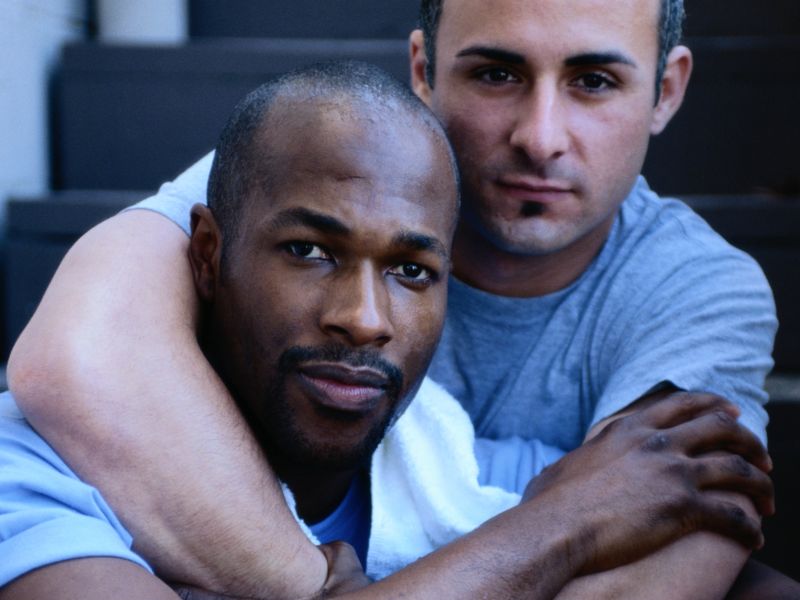
In a sign that powerful new ways to treat and prevent HIV are relaxing attitudes about safer sex, a new survey finds that gay and bisexual men are much less likely to use condoms than they were two decades ago.
Men questioned at a Atlanta gay pride event in 2015 — including HIV-positive men — were more likely to say they’d recently had anal sex without a condom compared to men who were questioned at the same event in 2006 and 1997.
Although there are signs that the rates of other sexually transmitted infections have increased and the possibility of a drug-resistant strain of the once-deadly virus looms, HIV experts said the condom-less trend may not be as troubling as it appears.
“There has been an increase in the understanding that condom-less anal sex is not risky” if men take a drug to prevent HIV infection or take medication if they are already infected, explained Jeffrey Parsons, who was not involved with the study. He’s a professor of psychology at Hunter College in New York City who studies HIV and health behaviors.
“Eventually, this is likely to result in decreased rates of HIV but also potentially higher rates of other sexually transmitted infections, which are much more easily treated than HIV,” he said.
“Sexual behavior among gay and bisexual men has evolved for two related reasons,” Parsons said. “First, treatment for those who are HIV-positive is successful,” since those who take medications and reduce the load of virus in their blood to an undetectable level cannot transmit the infection, he said.
And second, pre-exposure prophylaxis, better known as PrEP, helps men avoid HIV infection by taking a daily pill, he said.
“This changes sexual behavior and our whole notion of ‘safe’ sex,” Parsons pointed out.
The new study, from a team led by Seth Kalichman at the University of Connecticut, analyzed anonymous surveys given to male attendees at an Atlanta gay pride festival in 1997, 2005, 2006 and 2015.
More than 1,800 men were surveyed; 81 percent to 97 percent were white except in 2006, when researchers sought more blacks and only 39 percent were white.
Among men who said they were HIV-negative or didn’t know their status, 43 percent in 1997 said they’d had anal sex without a condom within the last six months. That number grew to 61 percent in 2015.
In 2015, a third of the men surveyed said they had unprotected sex with two or more men; that number was 9 percent in 1997.
Among HIV-positive men — 14 percent to 17 percent of those surveyed — the number who reported recently having anal sex without a condom grew from 25 percent in 1997 to 67 percent in 2015. Those who said they’d done this with two or more partners rose from 9 percent in 1997 to 52 percent in 2015.
The findings were published online Feb. 6 in the Archives of Sexual Behavior.
David Pantalone is an associate professor of psychology at the University of Massachusetts, Boston, who was not part of the study but reviewed the findings. He cautioned that the survey didn’t follow the same group of men over the years. Instead, the researchers talked to a new group each time.
“However, because the methods stayed the same, we can assume that the samples are comparable in important ways,” he said.
Pantalone also noted that the surveys don’t represent gay and bisexual men as a whole. By giving a survey to men at a gay pride event, “you’re going to have a good chunk of your sample who are letting loose and having fun, drinking, having sex. Your sample is going to be skewed towards higher risk,” he said.
What do the trends in treatment and sexual risk-taking mean for HIV rates?
“In smaller studies, we are starting to see reductions in new HIV infections,” Pantalone said, yet there are signs that rates of other sexually transmitted infections are up.
“It is possible for increases in untreated infections to offset some of the protective abilities of PrEP, especially given the increases in antibiotic resistance for the medications used to treat some of the common bacterial infections like gonorrhea and chlamydia,” he said.
What about gay men who may assume that they can take more risks because it’s not as deadly to have HIV and AIDS as it used to be? That is true, Pantalone said.
On the other hand, the treatment for HIV and the long-term side effects that it can cause will complicate a person’s health, he said, “so it is still worth avoiding, if possible.”
Parsons said there’s also a possibility that drug-resistant HIV will appear and be difficult to treat. He also noted that minorities haven’t been as likely as whites to take medications to prevent HIV infection.
“At the same time,” Parsons said, “gay men in 2017 have options that they didn’t have before.”
More information
For more about PrEP, visit the U.S. Centers for Disease Control and Prevention.
Source: HealthDay

Leave a Reply